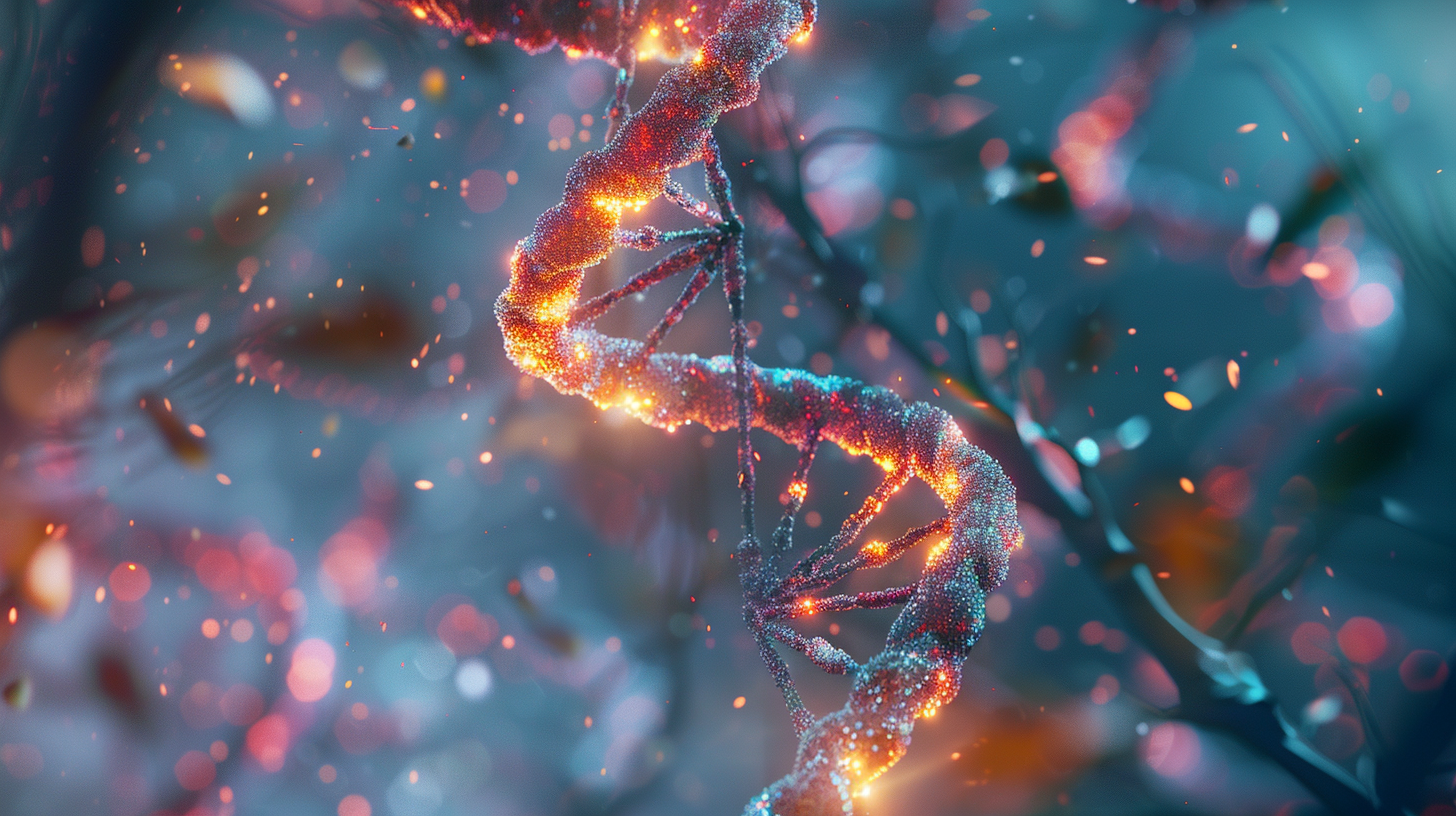Table of Contents Show
Just as we’ve begun to unleash the full potential of the internet, we find ourselves on the cusp of a revolution in biology—CRISPR and gene editing. This technology holds the promise of eradicating diseases, enhancing agricultural yield, and even extending human lifespan. However, it’s not without its perils, including ethical dilemmas and potential unforeseen consequences. We’re at a pivotal moment where our choices will shape the future of humanity and the planet. Let’s explore together the intricate balance between the incredible possibilities and the inherent risks that come with rewriting the code of life.
Key Takeaways
- CRISPR technology offers revolutionary solutions for genetic diseases and agricultural challenges.
- Ethical and environmental considerations are pivotal in CRISPR’s application and development.
- Regulatory frameworks must evolve to address the novel ethical dilemmas posed by gene editing.
- The balance between CRISPR’s promise in medical and agricultural innovations and its perils is essential for responsible innovation.
Understanding CRISPR Technology
CRISPR technology represents a groundbreaking tool in genetic engineering, allowing us to edit genes with unprecedented precision and efficiency. This marvel of science empowers us to correct genetic defects, combat diseases, and even enhance plant resilience against environmental stresses. We’re standing at the threshold of a new era where we can tackle challenges that once seemed insurmountable, all thanks to the capabilities CRISPR offers.
At its core, CRISPR is a relatively simple, yet profoundly powerful, tool. It works by harnessing a natural mechanism that bacteria use to fend off viruses, turning this process into a precise method to modify DNA. We’ve got the ability to target specific genes, making precise edits that can delete, replace, or insert segments of DNA. This level of control opens up avenues for innovation that we’re just beginning to explore.
Imagine the freedom to eradicate inherited diseases, enhance crop yields to feed the hungry, and address the looming threats of climate change. CRISPR gives us the keys to access these possibilities, offering hope and solutions where there once were none. It’s not just about editing genes; it’s about rewriting the future of humanity and the planet.
However, with great power comes great responsibility. As we explore further into the world of gene editing, we’re also navigating the ethical and societal implications of wielding such a tool. The potential for misuse cannot be ignored, and it’s up to us to guarantee that CRISPR is used for the greater good, respecting the freedom and dignity of all living beings.
Historical Development
To truly appreciate the revolutionary impact of CRISPR technology, it’s important to explore its historical development, tracing back to its origins in the late 20th century. This journey not only highlights the strides we’ve made in genetic engineering but also underscores the relentless pursuit of knowledge that defines our species’ quest for freedom.
- The concept of manipulating DNA was first imagined in the 1970s, laying the groundwork for what would become gene editing.
- In 1987, Japanese scientists discovered unusual DNA sequences in bacteria, not knowing they’d stumbled upon the natural defense mechanism that would inspire CRISPR.
- Fast forward to 2012, when Jennifer Doudna and Emmanuelle Charpentier transformed these findings into a groundbreaking gene-editing tool, demonstrating CRISPR’s potential to precisely alter DNA sequences.
- This discovery wasn’t just serendipitous; it was the result of decades of piecing together bits of data, understanding the mechanics behind these sequences, and envisioning their application in gene editing.
- The ethical debates and regulatory discussions surrounding CRISPR technology have been as much a part of its history as the scientific breakthroughs, fueling a dynamic conversation about the boundaries of human ingenuity.
We’ve witnessed an incredible journey from the initial discovery of peculiar bacterial DNA sequences to the development of a tool that promises to rewrite the script of life itself. As we navigate this path, we’re reminded of our collective responsibility to wield such power wisely, ensuring that the pursuit of freedom through scientific advancement benefits all of humanity, without compromising the ethical principles that guide us.
Medical Breakthroughs
Having explored the historical development of CRISPR technology, we now turn our attention to its groundbreaking applications in the medical field. This revolutionary tool has not just reshaped our approach to genetic research but has also paved the way for medical breakthroughs that once seemed beyond our reach.
We’re seeing a future where the chains of genetic disorders no longer restrain us, and the key to this freedom lies in CRISPR’s ability to precisely edit genes. It’s not just about fixing what’s broken; it’s about unleashing the potential for healthier lives. We’ve distilled the essence of CRISPR’s impact on medicine into a table that captures the essence of its transformative power:
| Application | Description | Potential Impact |
|---|---|---|
| Genetic Disease Correction | Directly repairing genetic mutations in diseases like cystic fibrosis. | Could eliminate inherited diseases. |
| Cancer Therapy | Targeting and modifying immune cells to fight cancer more effectively. | Revolutionizes cancer treatment. |
| HIV Cure | Disabling or removing HIV DNA from infected cells. | Offers hope for a definitive cure. |
This table isn’t just a list; it’s a map to a future where we’re no longer at the mercy of our DNA. Every application of CRISPR in the medical field brings us closer to a world where freedom from genetic constraints isn’t just a dream but a tangible reality. The medical breakthroughs we’re witnessing are just the beginning. As we continue to harness the power of CRISPR, we’re not just editing genes; we’re rewriting the rules of life itself.
Agricultural Innovations
Turning our focus to agricultural innovations, we’ll explore how CRISPR technology is revolutionizing crop resilience. We’re also mindful of the ethical considerations that accompany these advancements. Our discussion aims to balance the potential benefits with the critical questions they raise.
Crop Resilience Enhancement
We’re leveraging CRISPR technology to greatly enhance crop resilience, addressing global food security challenges. This revolutionary approach allows us to:
- Boost plants’ tolerance to extreme weather, from scorching heat to freezing temperatures.
- Enhance resistance against pests and diseases, reducing reliance on chemical pesticides.
- Speed up the adaptation of crops to changing climates, ensuring food supplies remain stable.
- Improve nutritional profiles, making healthier food more accessible to everyone.
- Increase yield per hectare, maximizing land use and feeding more mouths.
Ethical Considerations
While the benefits of CRISPR in agriculture are significant, it’s important to address the ethical implications these innovations bring. We’re stepping into uncharted territory, tweaking the very essence of our food sources. It raises questions: Who decides what’s secure? What are the long-term effects on ecosystems? We believe in pushing boundaries but not without considering the broader impacts.
It’s not just about creating drought-resistant crops or nutrient-packed vegetables. We’re talking about altering life’s blueprint. The freedom to innovate comes with the responsibility to make sure these changes don’t harm but rather benefit our planet and its inhabitants. We must engage in open, inclusive dialogues, making certain that decisions reflect a wide range of perspectives. It’s about finding a balance, where progress doesn’t outpace our ethical considerations.
Extending Human Lifespan
CRISPR and gene editing technologies hold the promise of extending human lifespans by targeting and modifying the genes linked to aging and age-related diseases. We’re on the threshold of harnessing these tools to potentially revolutionize how we age, pushing the boundaries of human health and longevity. Imagine a world where we can not only live longer but do so with the energy and health of our younger selves. It’s a future we’re enthusiastically working towards, driven by the desire for freedom—to live our lives to the fullest for as long as possible.
Here are a few ways CRISPR could help us achieve this remarkable feat:
- Precision Targeting of Aging Genes: By pinpointing and altering specific genes that contribute to the aging process, we can slow down or even reverse some aspects of aging.
- Elimination of Age-Related Diseases: Diseases like Alzheimer’s, heart disease, and diabetes could be prevented, allowing us to enjoy our extended years in good health.
- Enhanced Regeneration Capabilities: Boosting the body’s natural ability to repair and regenerate tissue, leading to a significant reduction in age-related decline.
- Improved DNA Repair Mechanisms: Enhancing the body’s capacity to fix DNA damage, a key factor in aging and cancer.
- Optimization of Metabolic Processes: Tweaking genes responsible for metabolism to maintain youthful energy levels and prevent obesity.
We’re not just talking about adding years to life, but life to those years. It’s about breaking free from the constraints of aging, releasing the potential for a longer, healthier existence. The journey has its challenges, but the destination—a life lived fully and freely, unburdened by the wear and tear of time—is worth every step.
Ethical Considerations
As we explore the ethical considerations of CRISPR and gene editing, we must ask ourselves where the moral boundaries lie. The issues of consent and the implications of gene therapy raise significant questions about autonomy and the rights of individuals. Moreover, we need to ponder the impact on biodiversity and the risks of genetic uniformity.
Moral Boundaries in Editing
Exploring the moral boundaries of gene editing, we must navigate the complex ethical considerations it entails. As we investigate this revolutionary technology, it’s essential we consider:
- The potential for unintended consequences that could arise from tampering with the genetic makeup of organisms.
- The risk of exacerbating social inequalities if gene editing becomes accessible only to the wealthy.
- The importance of respecting nature’s balance, understanding that our interventions might disrupt ecosystems in unforeseen ways.
- The challenge of drawing a line between therapeutic use and enhancement, ensuring we don’t overstep ethical boundaries.
- The responsibility to engage in transparent, inclusive dialogues with the public, ensuring that freedom of choice and informed consent are always upheld.
We’re at a crossroad, and it’s critical we tread carefully, respecting both the power and the potential perils of gene editing.
Consent and Gene Therapy
Discussing the ethical dimensions of gene therapy, addressing the issue of consent is crucial, ensuring that individuals are fully informed and willingly participate in the process. We must advocate for the right to autonomy, allowing people to make their own decisions regarding their bodies and future. Safeguarding freedom of choice in an era where technology can drastically alter our very essence is imperative.
The challenge lies in presenting complex scientific concepts in a way that’s accessible, ensuring consent is not only informed but comprehensible. We’re dedicated to a future where everyone’s rights are respected, including the freedom to opt in or out of gene therapy without coercion or manipulation. It’s our responsibility to create a framework that honors this principle, ensuring ethical boundaries are maintained while exploring the vast potential of gene editing.
Biodiversity and Genetic Uniformity
Moving beyond individual consent in gene therapy, we now confront the broader ethical implications of biodiversity and genetic uniformity. As we explore this topic, it’s essential to recognize the potential risks and benefits:
- CRISPR’s ability to edit genes could lead to reduced genetic diversity, risking ecosystems’ resilience.
- Homogenized genetics might make species more susceptible to diseases and environmental changes.
- On the flip side, we could engineer resilience into species, potentially saving them from extinction.
- The alteration of an organism’s genes could unintentionally affect the food chain and biodiversity.
- Yet, by carefully considering these edits, we have the power to protect endangered species and restore ecosystems.
We’re standing at a crossroads, where our choices could redefine life on Earth. Let’s choose paths that liberate, not confine, the natural world.
Genetic Diversity Concerns
One significant concern with CRISPR and gene editing is its potential impact on genetic diversity. When we start picking and choosing the traits we deem most desirable, we’re potentially sidelining the vast array of genetic variations that nature has cooked up over millions of years. It’s like choosing to keep only a handful of colors from the entire spectrum; we lose the richness that diversity offers.
We’re all for freedom, including the freedom to improve ourselves and the world around us. But with that responsibility to make certain we’re not inadvertently narrowing the genetic pool to a point where we lose out on the very variations that could hold the key to overcoming future challenges. Diseases, environmental changes, and unforeseen events require a broad genetic base to guarantee survival and adaptation.
Additionally, there’s the question of who decides what traits are worth keeping and which aren’t. What if, in our pursuit of perfection, we end up homogenizing humanity, erasing the very differences that make us unique and adaptable? The beauty of life lies in its diversity, in the unexpected combinations that arise and the new solutions they present.
We must tread carefully, valuing our freedom to explore and change, but also respecting the natural diversity that exists. It’s a delicate balance, making sure that as we wield the powerful tool of gene editing, we don’t end up sacrificing the genetic diversity that’s been our lifeline throughout history.
The Risk of Unintended Effects
Beyond concerns about genetic diversity, we also face the challenge of unintended effects when employing CRISPR and gene editing technologies. These technologies, while promising, carry with them the potential for outcomes that we might not anticipate, and it’s essential that we navigate these waters with our eyes wide open. It’s about maintaining the freedom to innovate while being mindful of the consequences.
Here are a few unintended effects that demand our attention:
- Off-target effects: Sometimes, CRISPR might edit parts of the genome we didn’t intend to alter, leading to unexpected results.
- Mosaicism: In some cases, not all cells in a multicellular organism get edited uniformly, resulting in a mosaic of edited and unedited cells. This inconsistency can undermine the efficacy of the treatment and pose significant challenges.
- Unforeseen genetic interactions: Editing one gene might inadvertently impact the function of another, leading to unforeseen complications or diseases.
- Impact on future generations: Changes made to the germline could be passed down, with long-term effects that are difficult to predict or control.
- Biodiversity risks: Altering species through gene editing could unintentionally affect ecosystems and the natural balance of biodiversity.
We’re standing at the threshold of a new era in science and medicine, armed with the power to rewrite the very code of life. But with great power comes great responsibility. We’ve got to make sure that our pursuit of freedom and innovation doesn’t unintentionally lead us down a path where we compromise the very essence of what we’re trying to protect or enhance.
Regulatory Landscape
How do global regulations adapt to the rapid advancements in CRISPR and gene editing technologies? We’re witnessing a transformative era, where the pace of scientific breakthroughs challenges the agility of regulatory frameworks worldwide. The goal is clear: we want to harness the immense potential of these technologies while safeguarding ethical standards and public health. Yet, achieving this balance is no small feat.
Countries are taking varied approaches, reflecting their unique cultural, ethical, and societal values. Some have embraced a more permissive stance, allowing research to flourish under carefully crafted guidelines that encourage innovation. These nations view regulation as a means to empower scientists and entrepreneurs, fostering an environment where groundbreaking therapies and agricultural advancements can emerge.
Conversely, others adopt a more cautious approach, imposing strict controls to preemptively address potential ethical and safety concerns. This perspective prioritizes the prevention of misuse and unintended consequences, even if it means slowing down the pace of development. It’s a protective stance, aimed at ensuring that the path forward is as safe as it is groundbreaking.
We’re at a crossroads, where the freedom to innovate intersects with the imperative to protect. It’s vital that regulations evolve in tandem with our understanding of CRISPR and gene editing’s implications. We advocate for a regulatory landscape that doesn’t stifle the revolutionary potential of these technologies but ensures they’re developed and applied with the utmost responsibility and care. Achieving this delicate balance is essential for tapping into the full potential of gene editing, transforming lives while upholding our shared values and ethics.
Public Perception and Debate
We’re now turning our attention to how the public perceives CRISPR and gene editing, a topic that’s as complex as the technology itself. Ethical concerns are at the forefront, sparking debates about the moral implications of genetic modifications. Additionally, the way media portrays these advancements and the evolving regulatory landscape greatly influence public opinion, setting the stage for a nuanced discussion.
Ethical Concerns Arise
As CRISPR and gene editing technologies advance, they ignite a complex debate over ethical implications and public acceptance. We’re at a crossroads, confronting questions that touch on the core of our values and freedoms. Here’s what’s stirring the pot:
- Guiding: Are we straying too far in modifying life?
- Disparity: Could these technologies widen the gap between the rich and poor?
- Assent: What about the rights of future generations who can’t weigh in?
- Variety: Might we inadvertently harm ecosystems?
- Slippery Slope: Where do we draw the line on what’s acceptable to edit?
We’re exploring uncharted waters, balancing the promise of breakthroughs with the responsibility to proceed ethically. It’s a journey we must tread thoughtfully, ensuring freedom and respect for all lives involved.
Media Influence on Views
Can the media’s portrayal of CRISPR and gene editing technologies shape public opinion and influence the debate? Absolutely. We’re living in an age where information spreads faster than ever before, and the narratives spun by media outlets have a significant impact on how we view these revolutionary technologies. It’s essential we stay vigilant, questioning the angles and stories being presented. When the media focuses on the potential for misuse or the ethical dilemmas, it can stir up fear and opposition. Conversely, highlighting the groundbreaking potential for curing diseases and enhancing food security can rally widespread support. We must demand nuanced, balanced reporting that respects our quest for knowledge and our right to form our own opinions, free from sensationalism or bias.
Regulatory Landscape Evolution
The evolution of the regulatory landscape for CRISPR and gene editing technologies has sparked intense public debate and reshaped perceptions globally. We’ve watched as discussions have unfolded, highlighting the need for a balance between innovation and ethical considerations. Here’s what’s most important to us:
- Empowering individuals through informed consent and participation in these groundbreaking technologies.
- Advocating for transparency in the development and application processes.
- Ensuring accessibility to these life-altering therapies for all, not just the wealthy.
- Upholding ethical standards to prevent misuse and protect future generations.
- Supporting ongoing dialogue between scientists, policymakers, and the public to navigate the complexities together.
We’re committed to fostering an environment where freedom and responsibility go hand in hand, allowing us to reap the benefits while safeguarding against the perils.
Future Potential
Exploring the future potential of CRISPR and gene editing opens doors to revolutionary advancements in medicine and agriculture. We’re standing on the brink of a new era where we can not only unlock genetic diseases that have plagued humanity for generations but also enhance crop resilience in the face of climate change. This isn’t just about fixing what’s broken; it’s about unleashing a level of human potential and security we’ve never seen before.
Imagine a world where we’ve eradicated hereditary illnesses, making life-long suffering a thing of the past. We’re talking about a future where children won’t have to inherit the diseases that afflicted their parents and grandparents. It’s a promise of freedom from the genetic lottery that has dictated our lives for too long.
In agriculture, we’re not just looking at solving the current food crisis. We’re paving the way for crops that can thrive in deteriorating environments, ensuring food security for generations to come. This means we’re not just adapting to climate change; we’re actively fighting against its impact on our food supply.
But it’s not just about the monumental shifts in health and food. It’s about the freedom to shape our destiny, to take control of our biological futures in ways we’ve only dreamed of. As we move forward, we’re not just rewriting genes; we’re rewriting the rules of what it means to be human, ensuring a future that’s healthier, more resilient, and fundamentally free.
Global Equity Issues
Addressing global equity issues is essential as we harness the power of CRISPR and gene editing technologies, guaranteeing they benefit all humanity, not just a privileged few. As we stand on the brink of potentially reshaping the future of medicine and agriculture, we’re tasked with guaranteeing that these revolutionary tools don’t widen the gap between the rich and poor but rather serve as a bridge to close it.
To guarantee that everyone enjoys the fruits of these technologies, we need to take into account several key factors:
- Accessibility: Making CRISPR and gene editing tools affordable and accessible to researchers and healthcare professionals across the globe, not just in wealthy nations.
- Education and Training: Providing education and training opportunities to scientists and healthcare workers in developing countries to build local expertise.
- Ethical Guidelines: Developing and enforcing global ethical guidelines to guarantee these technologies are used responsibly and for the benefit of all, not just to serve the interests of a few.
- Collaboration: Fostering international collaboration that allows for the sharing of knowledge, resources, and technologies.
- Regulatory Harmonization: Working towards harmonizing regulations across borders to facilitate the global development and application of gene editing technologies.
Safeguarding Biodiversity
In our quest to harness CRISPR and gene editing technologies, we must also prioritize the protection of our planet’s biodiversity. It’s not just about discovering new medical treatments or enhancing crop yields. We’re talking about the very fabric of life on Earth. The diversity of plants, animals, and microorganisms forms a complex web that maintains our environment. It’s our safety net, guaranteeing resilience against pests, diseases, and the impacts of climate change.
But here’s the thing: we’re at a crossroads. The power to edit genes comes with the possibility of unintended consequences. We could accidentally disrupt ecosystems or harm non-target species. That’s why we’ve got to tread carefully. We’re advocating for a balanced approach, one that respects nature’s intricate balances while exploring the potential of these groundbreaking technologies.
Let’s not forget, freedom thrives when our environment is healthy and diverse. Protecting biodiversity isn’t just an ecological duty; it’s a pathway to ensuring our own freedom to thrive on a planet that remains vibrant and full of life. We’re calling for rigorous environmental impact assessments before any gene editing project goes ahead. And it’s not just about the science. We need a global dialogue, involving communities, indigenous peoples, and stakeholders at every level.
Our collective future hinges on making responsible choices today. Let’s embrace the promise of CRISPR and gene editing with the wisdom to guarantee our planet’s biodiversity flourishes alongside human innovation. It’s a challenge, sure, but it’s one we can meet if we choose to act with foresight and respect for the natural world.
Conclusion
We’ve wandered through the winding ways of CRISPR, witnessing its wonders and weighing its woes. From medical miracles to agricultural advancements, this technology teases the tantalizing promise of tailored tomorrows. Yet, as we stand on this scientific frontier, we’re reminded of the responsibility to balance breakthroughs with bioethics, ensuring equity and preserving our planet’s precious palette. As we peer into the potential, let’s proceed with purpose, paving paths that promise progress while protecting the profound tapestry of life.







